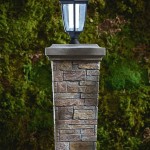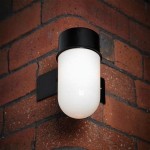How To Seal Acrylic Paint For Outdoor Use
Acrylic paint, celebrated for its versatility, vibrancy, and water-based nature, finds widespread use in various artistic and craft projects. However, the inherent properties of acrylic paint, while advantageous indoors, require modification for durable outdoor applications. Specifically, sealing acrylic paint is crucial for protecting it from the elements, ensuring longevity and preserving the aesthetic appeal of outdoor artworks and painted objects.
Understanding the environmental factors that affect acrylic paint is paramount. Prolonged exposure to ultraviolet (UV) radiation from sunlight can cause colors to fade, a process known as photochemical degradation. Moisture, in the form of rain, humidity, or condensation, can lead to blistering, cracking, and peeling of the paint film, especially if the paint is not adequately adhered to the substrate. Fluctuations in temperature cause expansion and contraction of materials, potentially leading to stress fractures in the paint layer. Physical abrasion from windblown particles, handling, or cleaning can also damage the paint surface.
Therefore, selecting the appropriate sealant and applying it correctly are essential steps in preparing acrylic paintings and projects for outdoor exposure. The following details the process of sealing acrylic paint for outdoor use, covering key considerations for material selection, preparation, and application techniques.
Choosing the Right Sealant
The selection of a suitable sealant is the first critical step in protecting acrylic paint outdoors. Several types of sealants are available, each with distinct properties and suitability for specific applications. Understanding these differences is crucial for making an informed decision.
Acrylic Polymer Varnishes: These varnishes, being acrylic-based themselves, offer excellent compatibility with acrylic paints. They form a flexible and durable film that is resistant to UV radiation and moisture. Acrylic polymer varnishes are typically water-based, making them easy to apply and clean up. They are available in various finishes, including gloss, satin, and matte, allowing the artist to control the final appearance of the artwork. However, some acrylic varnishes may be susceptible to scratching and abrasion compared to other sealant types. Look for "UV resistant" or "exterior" grade acrylic varnishes specifically designed for outdoor use.
Polyurethane Varnishes: Polyurethane varnishes are known for their exceptional durability and resistance to abrasion, chemicals, and water. They form a hard, tough film that provides superior protection against physical damage. Polyurethane varnishes are available in both water-based and oil-based formulations. Oil-based polyurethanes tend to offer better durability but require mineral spirits for cleanup and release stronger odors. Water-based polyurethanes are lower in odor and easier to clean up but may require more coats to achieve the desired level of protection. When using polyurethane, ensure it contains UV absorbers to prevent damage to the underlying acrylic paint layer. It's important to note that some Polyurethanes may yellow over time, which could affect the underlying paint color.
Spar Urethanes: Originally developed for use on boats, spar urethanes are exceptionally flexible and resistant to water damage, making them a suitable option for outdoor acrylic paint protection. Their flexibility allows them to withstand the expansion and contraction of the substrate due to temperature changes without cracking. Spar urethanes often have a high gloss finish, which can enhance the vibrancy of the colors. However, they may yellow more noticeably than other types of sealants, and their application can be more demanding, requiring multiple thin coats. Spar Urethanes are usually oil-based, so proper ventilation and handling precautions are necessary.
Epoxy Resins: While primarily used for castings and coatings, epoxy resins can also be used to seal acrylic paint for outdoor use. Epoxy resins create a very hard, durable, and waterproof surface. They offer excellent chemical resistance and are highly resistant to abrasion. However, epoxy resins can be more challenging to work with than other types of sealants. They require precise mixing ratios and application techniques to ensure proper curing. Epoxy resins are also susceptible to yellowing upon prolonged exposure to UV radiation, so a UV-resistant topcoat is usually necessary. Furthermore, Epoxy's rigidity could lead to cracking if the underlying material expands and contracts too much.
In addition to the type of sealant, consider its finish. Gloss finishes enhance color vibrancy and provide a reflective surface that can improve UV protection. Matte finishes reduce glare and offer a more subtle appearance. Satin finishes provide a balance between gloss and matte. Choose a finish that complements the artwork and provides the desired level of protection.
Preparing the Surface and Applying the Sealant
Proper surface preparation is crucial for ensuring good adhesion of the sealant and achieving a durable finish. Before applying any sealant, the acrylic paint must be fully cured. Refer to the manufacturer's instructions for the recommended curing time, which can vary depending on the type of acrylic paint and environmental conditions. Typically, allowing the paint to dry for at least 72 hours is recommended.
Clean the painted surface thoroughly to remove any dirt, dust, grease, or other contaminants. Use a soft cloth or sponge and a mild soap solution. Rinse the surface thoroughly with clean water and allow it to dry completely. Avoid harsh chemicals or abrasive cleaners that could damage the paint surface.
If the painted surface is uneven or has imperfections, sand it lightly with fine-grit sandpaper (220-grit or higher) to create a smooth and uniform surface. This will improve the adhesion of the sealant and result in a more professional-looking finish. Remove any sanding dust with a tack cloth.
Apply the sealant in thin, even coats, following the manufacturer's instructions. Multiple thin coats are generally preferable to a single thick coat, as they reduce the risk of drips, runs, and uneven drying. Allow each coat to dry completely before applying the next.
The application method depends on the type of sealant and the size of the project. Brushes, rollers, and spray guns are all commonly used. When using a brush, choose a high-quality brush with soft bristles to avoid brushstrokes. When using a roller, select a roller with a short nap to achieve a smooth finish. When using a spray gun, ensure proper ventilation and wear appropriate respiratory protection. Maintain a consistent distance and speed to avoid uneven coverage.
For large projects or those with intricate details, consider using a self-leveling sealant. These sealants are designed to flow smoothly and evenly, minimizing brushstrokes and creating a professional-looking finish. However, self-leveling sealants may require more drying time.
When applying sealant outdoors, avoid working in direct sunlight, high humidity, or windy conditions. Direct sunlight can cause the sealant to dry too quickly, leading to cracking or blistering. High humidity can slow down the drying process and prevent the sealant from adhering properly. Windy conditions can blow dust and debris onto the wet sealant, resulting in an uneven finish. Ideally, apply the sealant on a calm, overcast day with moderate temperatures.
Post-Application Care and Maintenance
Proper care and maintenance can significantly extend the life of sealed acrylic paint outdoors. Regular cleaning helps remove dirt, dust, and other contaminants that can damage the sealant and paint. Use a soft cloth or sponge and a mild soap solution to clean the surface. Avoid harsh chemicals or abrasive cleaners.
Inspect the surface periodically for signs of damage, such as cracks, blisters, or peeling. Address any damage promptly to prevent further deterioration. Small cracks can be repaired with a touch-up sealant. More extensive damage may require removing the damaged sealant and reapplying a fresh coat.
Reapply the sealant periodically to maintain its protective qualities. The frequency of reapplication depends on the environmental conditions and the type of sealant used. Generally, reapplying the sealant every one to two years is recommended. Before reapplying, clean the surface thoroughly and lightly sand it to create a better surface for the new sealant to adhere to.
Consider the placement of the painted object or artwork. Positioning it in a sheltered location, away from direct sunlight, rain, and wind, can significantly reduce its exposure to damaging elements and extend its lifespan. Overhanging eaves, covered porches, or enclosed patios can provide substantial protection. If the item is portable, consider storing it indoors during harsh weather conditions or during the off-season. This simple precaution can significantly reduce the wear and tear on the sealed surface.
For particularly valuable or irreplaceable artworks, consider consulting with a professional art conservator. A conservator can provide expert advice on the best methods for protecting and maintaining the artwork, taking into account its specific materials, construction, and environmental conditions. They can also perform specialized cleaning and repair procedures to ensure its longevity.
Selecting the appropriate sealant, preparing the surface meticulously, applying the sealant correctly, and providing ongoing care and maintenance are essential steps in protecting acrylic paint for outdoor use. By following these guidelines, durable and aesthetically pleasing outdoor artworks and painted objects can be created, able to withstand the challenges posed by the environment.

How To Seal An Acrylic Painting Step By

Top Coats And Sealers For Crafts A Comprehensive Guide The Graphics Fairy

How To Seal An Acrylic Painting

How To Seal Acrylic Paint On Wood Learn About Sealing Paints

How To Seal An Acrylic Painting Ultimate Guide For Best Results

How To Seal An Acrylic Painting

How To Seal An Acrylic Painting Step By

How To Seal An Acrylic Painting Ultimate Guide For Best Results

How To Seal An Acrylic Painting

How To Seal Acrylic Paint On Wood Learn About Sealing Paints







